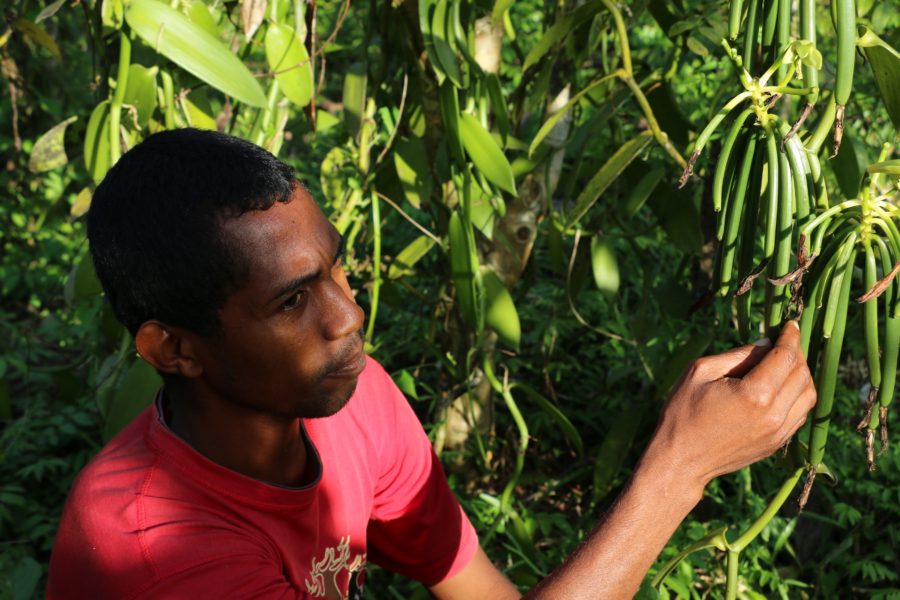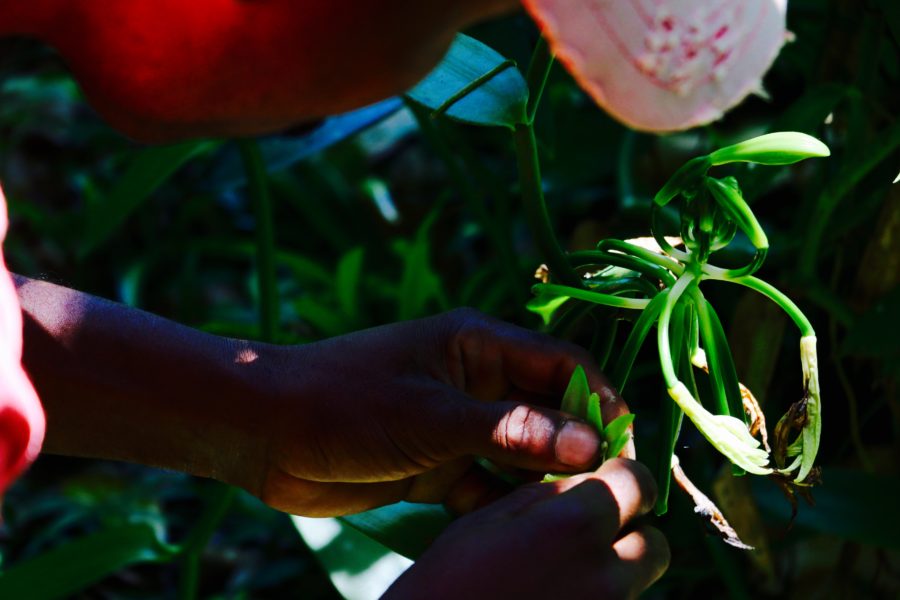Vanilla grows on orchids and is cultivated by smallholders in the jungles of Madagascar. Cultivating and processing the spice is time and labour intensive, in particular because each individual orchid must be pollinated by hand the same day the flower opens.
Vanilla grows on orchids
The vanilla plant is an orchid with vines up to ten metres long. Once the vanilla is planted, it takes three to four years before it flowers and bears fruit. After ten to twelve years, the plant no longer produces enough vanilla to be commercially viable.

Vanilje gror på orkidéerVaniljeplanten er en orkidé med op til 10 meter lange ranker. Fra vaniljen plantes, går der cirka tre-fire år, før den blomstrer og bærer frugt. Efter 10-12 år producerer planten ikke længere vanilje nok til at kunne bruges kommercielt.

Juni til august er høstsæsonDer går mellem syv og ni måneder fra vaniljeblomsten er blevet bestøvet, til vaniljen er moden og kan høstes. Vaniljen kaldes på dette stadie for grønne vaniljebønner – og minder også udseendesmæssigt om en grøn bønne. Jo længere tid vaniljen får lov at modne på planten, jo mere koncentreret bliver smagen af vanilje efter forarbejdning. Kvaliteten af vaniljen bedømmes ud fra, hvor koncentreret aromastoffet vanillin er, hvilket har indvirkning på vaniljens markedspris. Hvis vaniljen bliver hængende for længe på planten risikerer bønnen at briste, hvilket resulterer i en lavere kvalitet og markedspris.
Every flower must be pollinated by hand
Vanilla must be pollinated by hand
The vanilla orchid originates in Mexico, where it is pollinated in the wild by bees. Because these bees are not found in Madagascar, the vanilla orchids must be pollinated by hand. The yellow vanilla flower blooms just one day per year, and is typically open for only a few hours. Pollination of the flowers therefore requires a great deal of manual labour. Hand-pollination usually occurs between October and January.
Harvest from June to August
It takes seven to nine months from the time of pollination until the vanilla is mature and can be harvested. At this stage, they are called green vanilla beans and do in fact resemble green string beans. The longer the vanilla is allowed to mature on the plant, the more concentrated the vanilla flavour will be after processing. The quality of vanilla is judged by its concentration of the aroma compound vanillin, which also impacts its market price. If the vanilla remains on the plant too long, the bean may burst, resulting in lower quality and a lower market price.
It takes six kilos of green vanilla beans to make one kilo of black vanilla
After the harvest, the vanilla goes through a long and complex process whereby the aroma compound vanillin and other flavour components are developed.
- When the vanilla is harvested, it is washed thoroughly and then warmed by submersion in hot water.
- In order to develop the right flavour components, the vanilla requires rapid dehydration and slow fermentation. Over the course of weeks, the vanilla is alternately dried in the sun during the day and packed in airtight containers at night until the beans have acquired a dark brown colour.
- The vanilla is sorted by quality based on length and moistness, at which point it is stored for up to six months. This causes the vanilla to become lighter in weight. Approximately six kilograms of green vanilla beans are needed to produce one kilogram of processed vanilla.
- After processing, the vanilla is boxed and exported by sea to an importer.
X